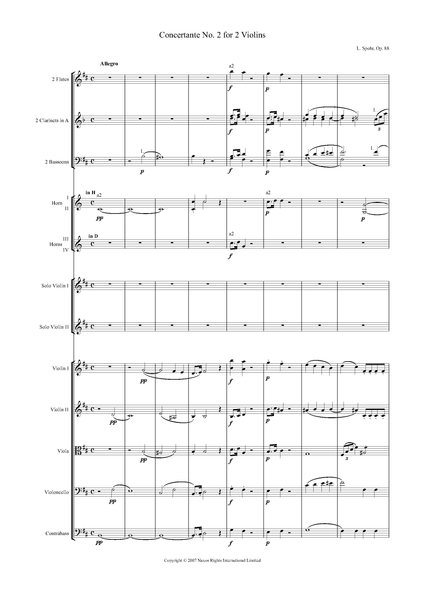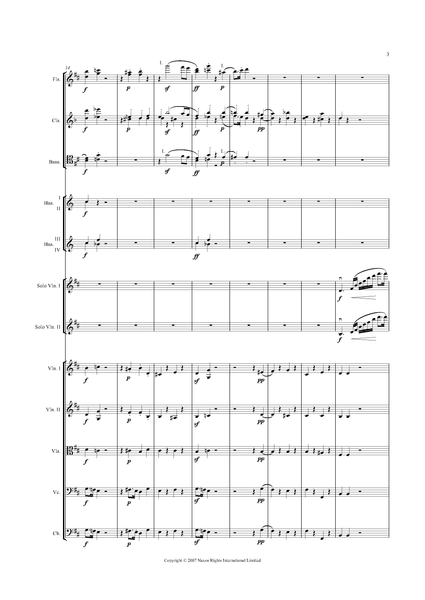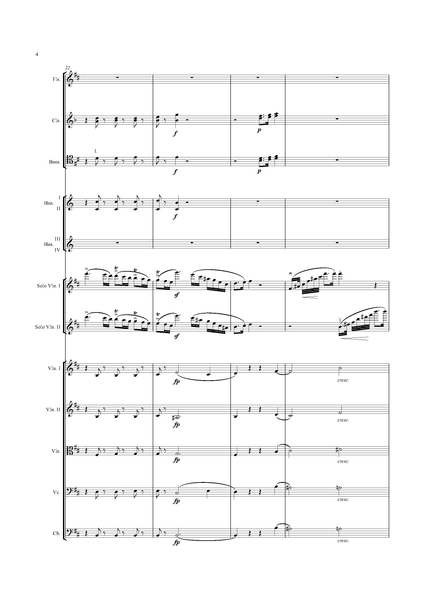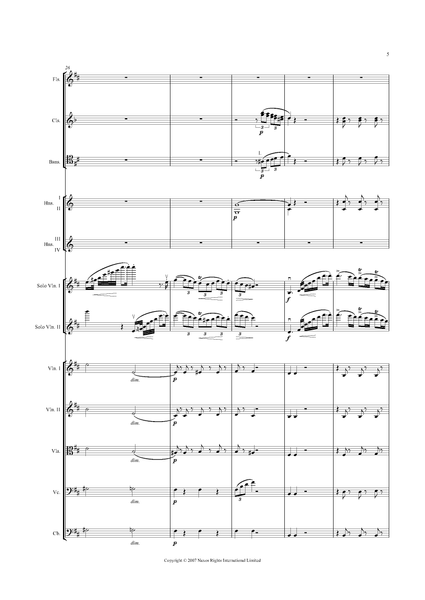Louis Spohr: Concertante No. 2 in B Minor, Op. 88 – full score (NXP012)
Sheet music edition. Choose your format from the selection above.
Instrumentation: 2.0.2.2 - 4.0.0.0 - 2 violin solos - strings
132 pages
Concertos for multiple soloists were rare in the romantic era. The cult of the solo-virtuoso dominated the genre with its strong focus on the unique individuality of a specific performer’s contribution to what is essentially an argumentative form. While excelling in this type of concerto as well, with four Clarinet Concertos and the eighteen solo Violin Concertos, Louis Spohr sought to place musical integrity ahead of superficial showmanship in the relationship between soloist and ensemble.
One can notice a nostalgic tendency in Spohr’s aesthetic which coincided with the rise of “bourgeois historicism” in the other arts. It has often been called the Biedermeier style, and is characterized by elegance, sturdy workmanship, and emotional reticence; this style was to be maligned in the rise of the sensational in art. Louis Spohr opposed the superficiality of the national romantic school of composition, which he considered vulgar, repetitive, blatant and bombastic.
The generosity of the shaping of the individual parts of his two Concertanti does not place one soloist above the other. Rather they complement one another and contribute to one another’s display. This collegiality manifested itself in his tireless promotion of his contemporaries – both perfomers and composers – as well as his championing of the works of J. S. Bach. Indeed, the two works have more in common with Bach’s concerto for similar forces in its use of Baroque ideals inherited from the Concerto Grosso.
Spohr uses the term concertante to describe these two works for two violins and orchestra. Each Concertante is in the traditional three movements.
The Concertante in B minor, Op. 88, written in 1833, is a mature work that predates many of the stylistic traits copied later by Berlioz, Tchaikovsky and Mahler. The orchestral introduction sets the stage for the two soloists who present the two themes of this sonata movement. The second movement begins with the soloists playing double-stops, the result sounding like a string quartet. The last movement is again in Rondo form with a theme of darker hue, perhaps reflecting the fatal illness of his wifeDorette.
Olav Anton Thommessen
Audio Sample













